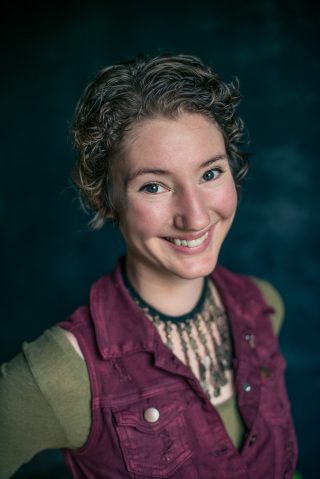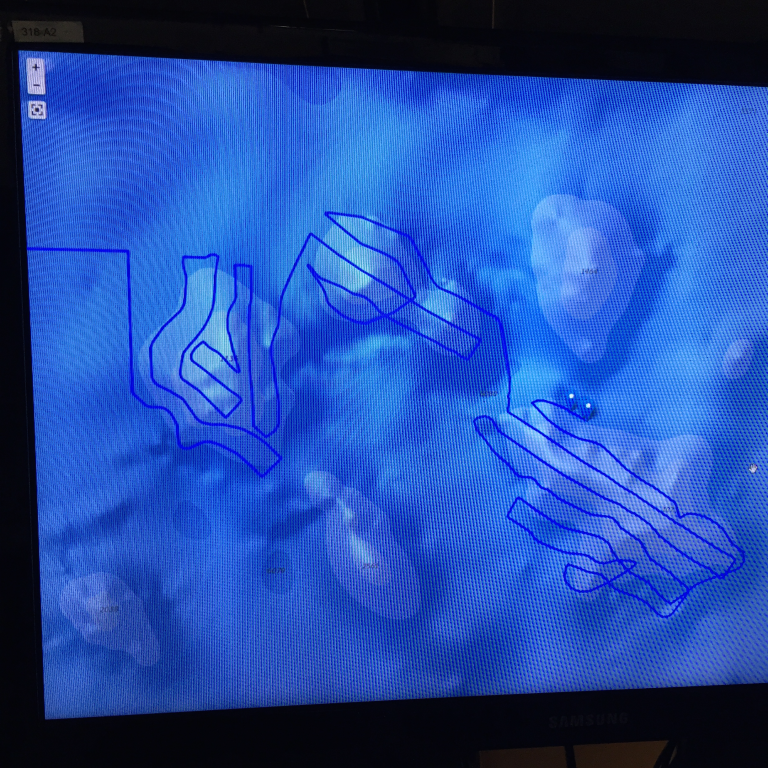
As we wend our weaving way across the waters of the Johnston Atoll Unit, tracing the contours of previously-unexplored seamounts below, there is a full moon on the horizon. Work never stops aboard the vessel. There is always someone watching the multibeam data streaming into the science control room, carefully monitoring to ensure that there are no program crashes that might interrupt the image we are building from snippets of sound.
Gaining Familiarity
Over the past week, I have been building images of my own—sketching environments and shipmates and generally acquainting myself with the ship prior to summarizing her work on this transit in an 11-page comic.
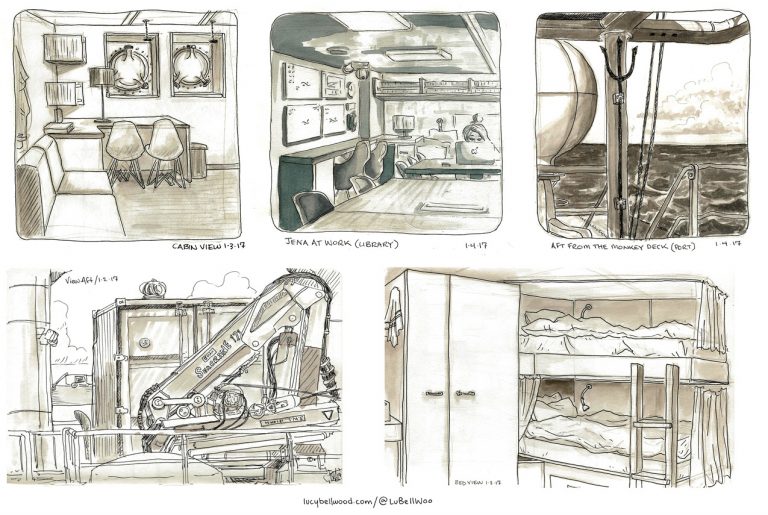
Every morning I have time to roll out of bed and grab a cup of tea before going in to relieve the dawn watch-standers. They are surprisingly chipper for people who have been up since midnight, although it may just be the impending embrace of sleep giving them a final boost.
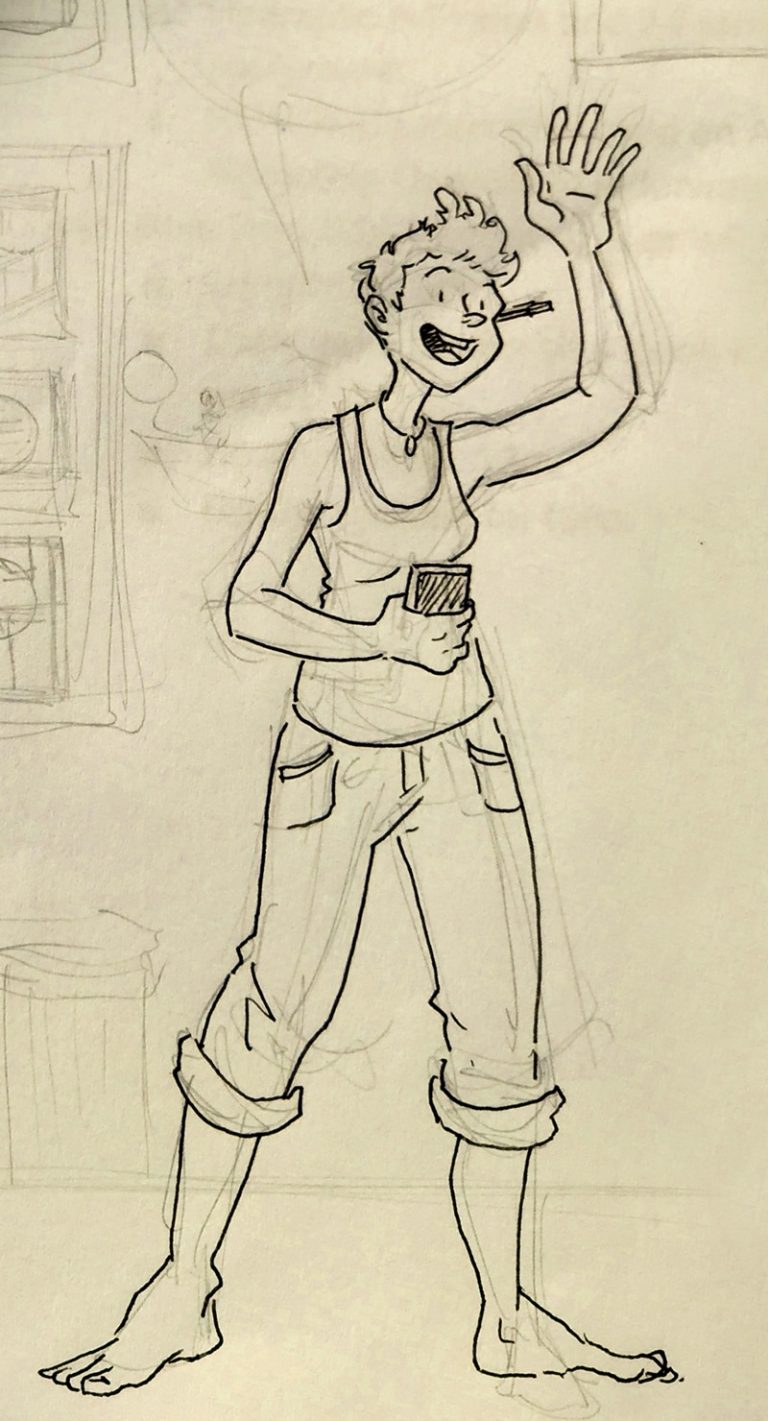
Beverage in hand, I get down to cleaning the data we have collected in the previous hour. While lassoing and eliminating outlying points, I find myself thinking about the intricate puzzle of Falkor’s operations. The creative work I do is self-sufficient. It is one of the things I love about being an independent cartoonist, but aboard Falkor, everyone has a role to play, and a specialized set of skills to bring that role to life.
Strength in Diversity
Marine Geologist Jonathan Tree helps write small programs that update our data logs more efficiently. Lead Technician Colleen Peters braves manuals and customer support lines to ensure that snags and lags in our software are sent to an early grave. Lead Scientist John Smith regales us with stories of working with ROVs, bringing insight into how this data might be used by NOAA’s Okeanos, scheduled for a diving expedition in this region later in 2017. Each member of the crew provides a different perspective and helps keep the vessel humming along, day after day and night after night.
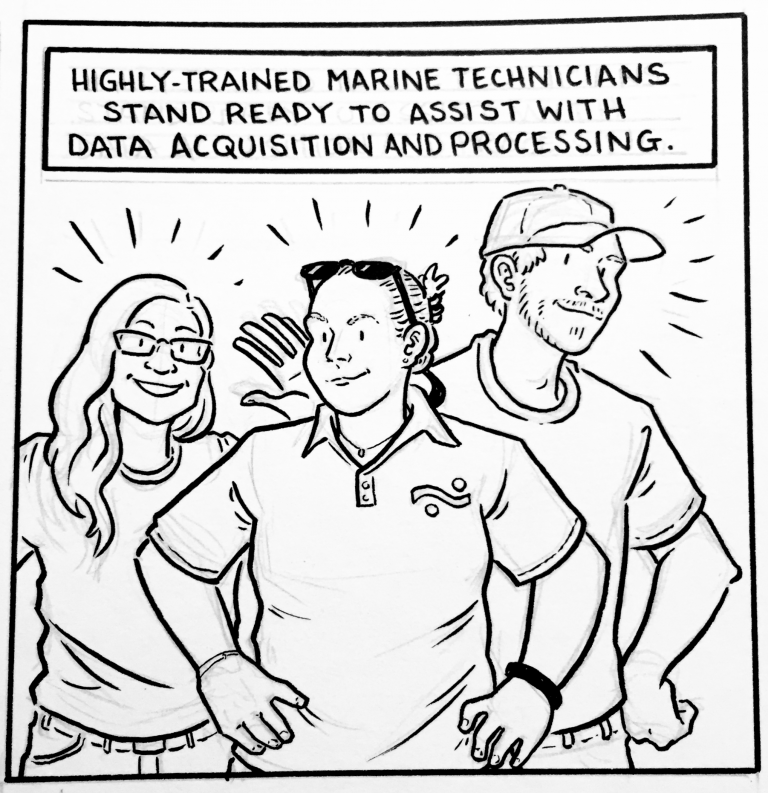
Everything in Balance
While waiting for new data to load, I switch to inking the pages I was penciling last night, carefully going over the layouts with a felt-tip brush pen. With 11 pages of playful-yet-dense summarization to crank through before we make landfall on the 16th, it is a tight turnaround, but I think I will be able to make it. I have already enjoyed trying to capture the likenesses and character quirks of our various team members, and now it is time to bring the whole operation together.
The rhythms of inking are familiar to me, so it is nice to return to them in between feeling my way around the mapping software. I knew nothing of this research before arriving on board two weeks ago, and the data cleanup work I am doing is not extremely technical, but it ties me more tightly to the fabric of our venture. Balancing a pad of Bristol board on one knee with my left hand while tidying data with my right feels fitting—a mediation between art and science.
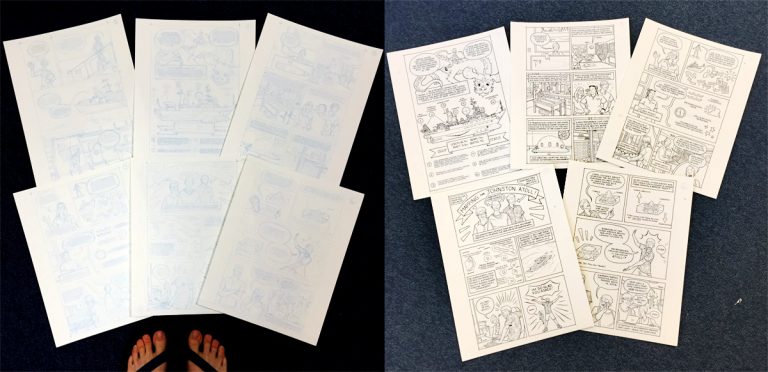
This is something I have always enjoyed about sailing. We may not be sweating halyards in a line on the foredeck, but entering this watch rotation brings about a similar feeling of camaraderie and teamwork. The picture is too big to comprehend alone: we have to cooperate.
